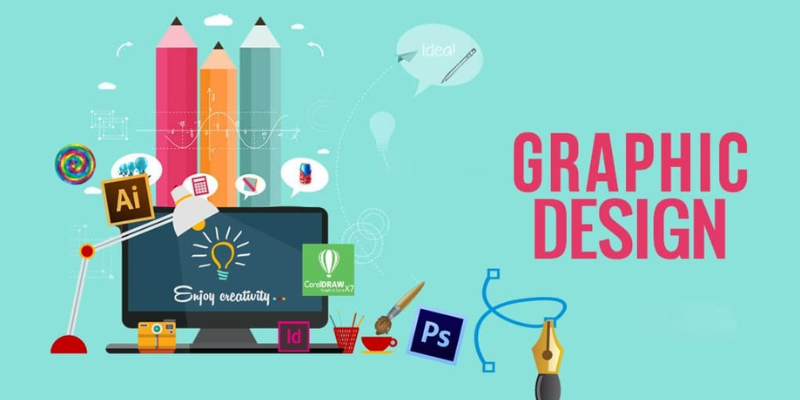When more people think of graphic design, they typically envision colorful images, bold typography, or eye-catching layouts. But one of the most powerful and often overlooked elements in design is… nothing. Or more precisely, white space.
Also known as negative space, white space refers to the empty areas between and around design elements. It’s not just blank space for the sake of being empty it’s a crucial part of layout, structure, and flow. White space can shape a user’s experience, guide their attention, and even elevate a brand’s identity.
If you’re starting your design journey or refining your skills through Graphic Design Courses in Chennai, understanding how to use white space effectively will change how you design forever.
What Exactly Is White Space?
White space doesn’t literally have to be white. It can be any background color or texture – what matters is that it provides breathing room between elements. White space helps reduce clutter, create hierarchy, and enhance readability.
There are two main types:
- Macro White Space: Large areas between major layout elements (like between sections of a webpage).
- Micro White Space: Smaller gaps between elements like lines of text, buttons, icons, or paragraphs.
Designers often say: “White space is what makes the content readable and enjoyable.”
Why White Space Matters in Modern Design
In today’s fast-paced digital world, users want information quickly and without friction. White space allows the content to breathe and gives the user a clear visual path. Whether you’re designing a poster, website, or app, white space helps:
- Improve legibility
- Create focus and emphasis
- Balance the composition
- Reflect a brand’s sophistication or minimalism
This is especially important when you consider the Components of Graphic Design, which include typography, imagery, layout, and color. Without proper spacing between these elements, your design can feel crowded and confusing.
White Space and Visual Hierarchy
One of white space’s most important roles is in establishing visual hierarchy. This is the order in which the viewer’s eyes process information.
For example, imagine a webpage with a bold headline, a clean paragraph underneath, and a call-to-action button surrounded by white space. The eye is naturally drawn to each element in the correct order – headline → text → button – because of the space around them.
White space literally tells the viewer where to look next. It guides them gently and keeps them engaged.
Enhancing Storytelling Through Design
Good design doesn’t just look pretty – it tells a story. And as any professional will tell you, Storytelling Is Enhanced by Graphic Design.
White space is like the pause in a good conversation. It helps the viewer process the message. It slows things down just enough to let the message sink in.
Think about magazine layouts or high-end fashion websites. The abundance of white space doesn’t signal laziness – it signals elegance, intention, and focus. It tells the viewer: “This is important. Take your time.”
This is why mastering the subtle use of white space is essential for every designer who wants to build compelling visual narratives.
White Space and Color Theory
While white space creates balance and order, it also works hand in hand with color. The Fundamentals of Color Theory teach us how color choices affect emotion and attention.
Now imagine pairing strategic white space with powerful color. A pop of red surrounded by clean, empty space draws immediate attention. A calming pastel palette with generous spacing creates a sense of relaxation.
When you combine white space with thoughtful color, you increase contrast, readability, and emotional impact.
Common Misconceptions About White Space
White space sometimes gets a bad reputation, especially from clients or stakeholders who think “more space” means “wasted space.”
But in reality:
- White space is not wasted space. It adds clarity.
- White space doesn’t make the design look empty. It makes it look clean.
- White space doesn’t reduce content. It enhances comprehension.
If anything, not using white space properly can make your content ineffective. It’s like trying to shout five different messages at once versus speaking one at a time clearly. If you’re currently taking a UI UX Designer Course in Chennai, you’ll start noticing how UI designers use white space in combination with color and typography to shape user behaviour.
Real-World Examples of White Space in Action
- Apple: Their website is a masterclass in minimalism and white space. Each product is given room to shine, and the layout is clean and luxurious.
- Google Search: The most famous homepage in the world is 90% white space, focusing only on what matters: the search bar.
- Luxury Brands: High-end brands like Chanel and Prada use white space to convey exclusivity and elegance.
Next time you look at a well-designed website, take a moment to appreciate the space around the elements. It’s not just there by accident.
Tips to Use White Space Effectively
If you’re ready to start using white space like a pro, here are a few tips:
- Prioritize readability: Use space between lines and around text blocks.
- Group elements with intention: Space creates relationships between items.
- Let important elements breathe: Give your CTA or hero image room to stand out.
- Don’t overcrowd: Less is truly more in modern design.
These are principles every designer should learn early. A good Training Institute in Chennai will emphasize layout balance and spacing as much as color and typography.
White space is not an afterthought. It’s a vital design tool that shapes perception, improves communication, and strengthens visual storytelling. In a world overflowing with content, smart use of space helps your message rise above the noise.
Great design isn’t just what you add it’s also what you leave out. And that’s the real beauty of white space.



